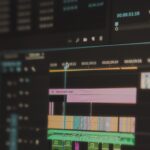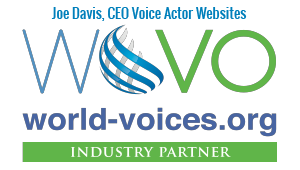Welcome to part two of this editing voiceover article. Don’t forget to check out part one before reading any further. Editing audio is an art like baking a beautiful cake or painting a magnificent masterpiece. That said, it is not something anyone can do to achieve proficiency. Some people may consider themself good at making a cake, but it does not mean they will be able to do it for a living. On the same coin, audio editing is no different; many of us may have basic skills, but that does not mean we are qualified to be sound engineers. Here’s a look at the basics a voice actor will need to know for editing voiceover audio.
Delivering Clean Voiceover
The last article mentioned that the best way to produce a strong audio file is to make as few mistakes as possible when recording. However, even the best of us are subject to the occasional loud breath, lip smack, or stumble. So let’s look at these three things:
One: Breaths
Breaths are good in context; in video games, in particular, breaths add to the character. However, outside the context, a nasty sharp breath can be nasty to hear. Deciding if a breath needs to stay or go is dependent on you. But, if you want to remove them, there are several plug-ins out there that will purge an entire file, like the waves de-breather.
Two: Lipsmacks
Our ears don’t tend to hear this weird sound, but the microphone does. It is the sound of moisture on our lips as they open. It makes a small popping sound which, when played back, is overly obvious. They can be manually plucked out, or most editing software will have a noise reduction tool within the edit functions. A noise reduction tool simply identifies a sound and removes it from the entire file.
Three: Stumbles
There is little we can do about these other than removing them manually. A cold read of the script before hitting the record can help with this. If it happens a lot, try cold-reading random products around the house for a few minutes each day. Sight reading, in particular, is an art.
Editing Voiceover Summary
The above are the most common and basic problems a voiceover artist might find when editing. The depths of editing voiceover can go much deeper than this. Depending on your skill level, you might know a lot about compressions, LUFS, EQ, and other elements of the editing world. Perhaps you want to learn more; this is great and certainly something you should do, as it will come in handy down the line. It is important you do not over-edit your recordings if you are unsure of what you are doing; it can have a detrimental effect that might be irreversible later on. If in doubt, you can always have a sound engineer look over your project for critiquing purposes.
Editing Voiceover by Alan Shires – Actor, Voiceover Artist, and Presenter at www.alanshires.co.uk.



